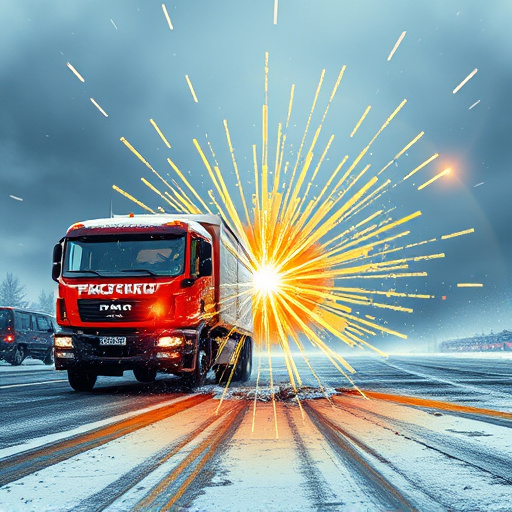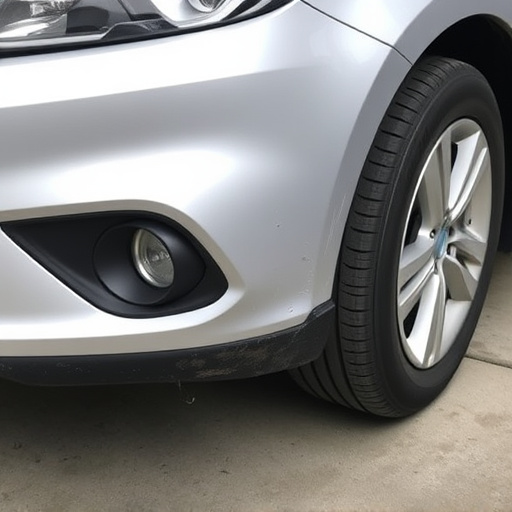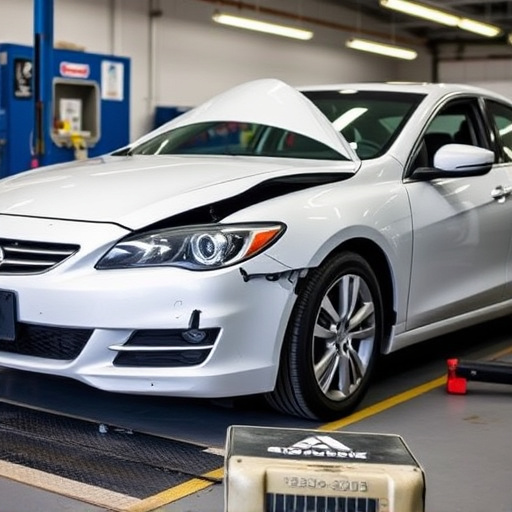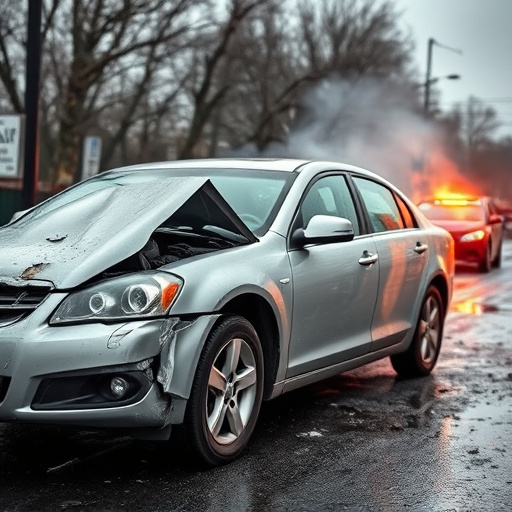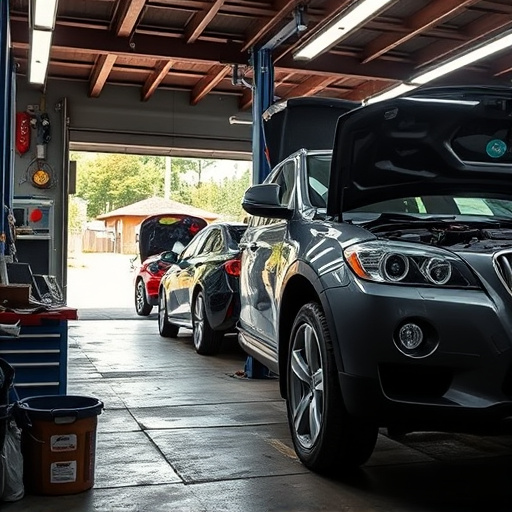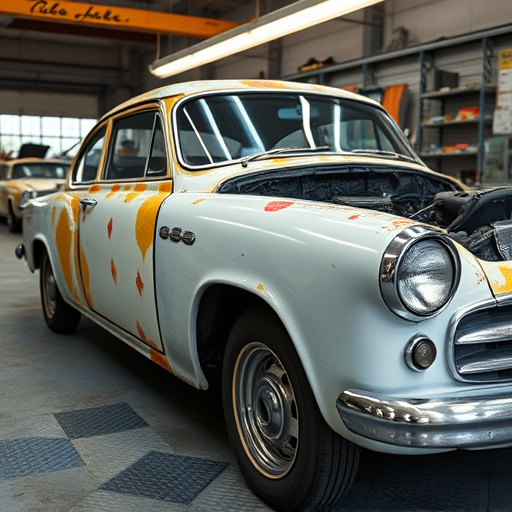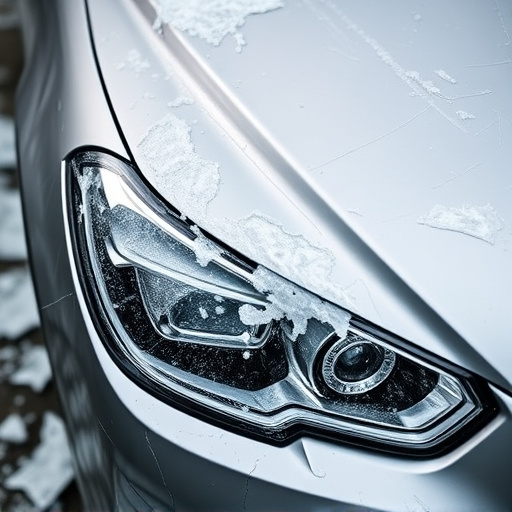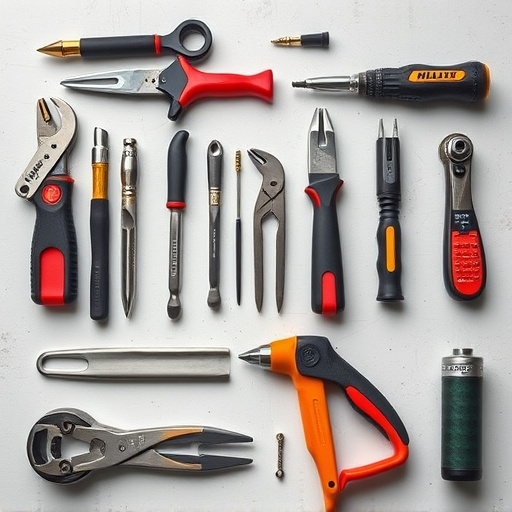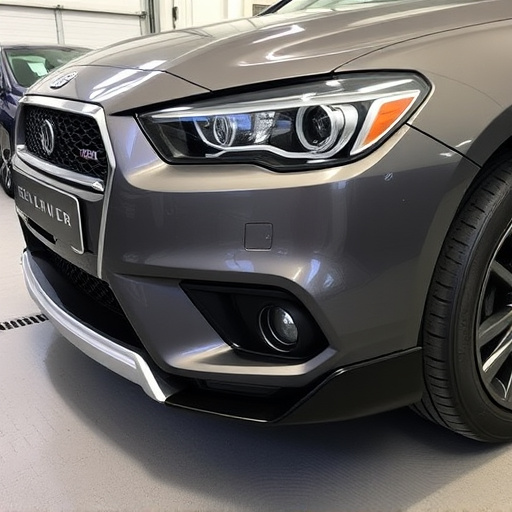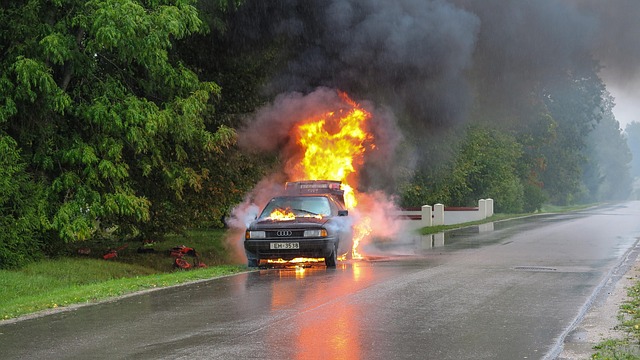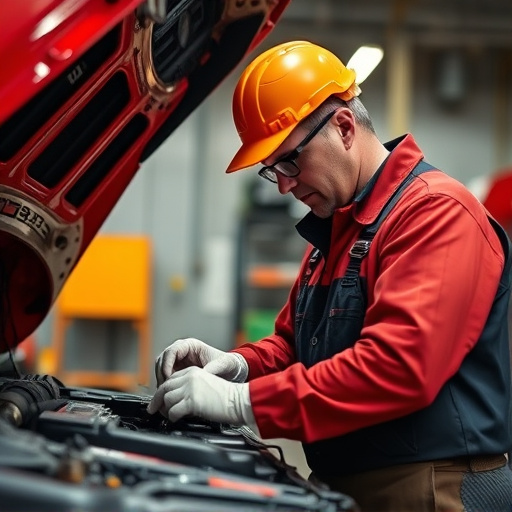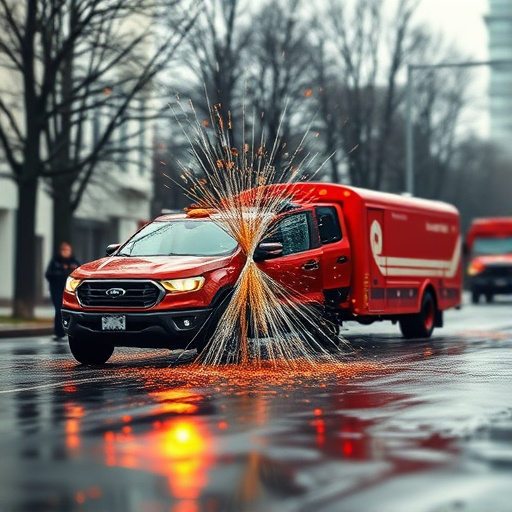Infrared paint drying, a game-changer in auto repair, cuts drying times, enhances productivity and quality control by precise heat control, streamlining processes, reducing labor costs, and delivering faster high-quality finishes, especially crucial for intricate repairs and high-value vehicles. Best practices include meticulous surface prep, controlled environmental conditions, and adherence to manufacturer guidelines.
Infrared paint drying is a revolutionary technology transforming the painting industry. This innovative process accelerates curing times, reduces odours, and enhances durability compared to traditional methods. Understanding infrared technology involves grasping how it uses heat to speed up the chemical reactions in paint. This article delves into the advantages, best practices, and considerations of infrared paint drying, equipping folks with knowledge to make informed decisions in today’s digital era.
- Understanding Infrared Technology in Painting
- Advantages of Infrared Paint Drying Process
- Best Practices and Common Considerations
Understanding Infrared Technology in Painting

Infrared technology has revolutionized many industries, and its application in painting, specifically with infrared paint drying, is no exception. This innovative process utilizes concentrated infrared energy to accelerate the curing or drying time of paints and coatings. Unlike traditional drying methods that rely on ambient air temperature, infrared technology provides a direct heat source, enabling efficient and rapid curing. This is particularly beneficial for vehicle repair services and auto body repair shops, where quick turnaround times are crucial.
Infrared paint drying offers several advantages, such as reduced drying times, improved productivity, and enhanced quality control in car body shops. The precise control over heat allows for more consistent results, minimizing the risk of uneven curing often associated with conventional methods. By employing infrared technology, these shops can streamline their processes, reduce labor costs, and deliver high-quality finishes to their clients faster, making it a game-changer in the auto industry.
Advantages of Infrared Paint Drying Process
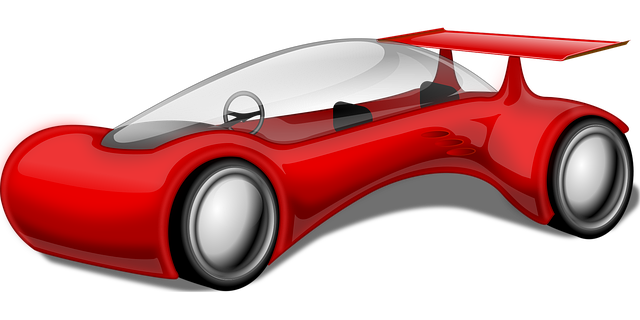
Infrared paint drying offers a range of advantages over traditional methods, revolutionizing the way we approach vehicle paint repair and automotive restoration. By utilizing infrared technology, the process can significantly reduce drying times, often cutting weeks off the usual schedule. This efficiency is a game-changer for both professional and DIY enthusiasts in the car damage repair sector, enabling faster turnaround times and increased productivity.
Furthermore, infrared paint drying promotes more even and consistent results. The targeted heat application prevents over-drying or under-curing hotspots, ensuring a seamless, high-quality finish on every project, whether it’s a minor touch-up job or a complete vehicle paint overhaul. This precision is particularly beneficial in the intricate world of vehicle paint repair, where achieving an undetectable blend with surrounding panels and colors is paramount.
Best Practices and Common Considerations

When adopting infrared paint drying for hail damage repair or Mercedes Benz collision repair, auto body shops can expect significant benefits in terms of efficiency and quality. However, best practices and common considerations play a crucial role in achieving optimal results.
For instance, ensuring proper surface preparation is essential before initiating the process. This involves meticulous cleaning, degreasing, and inspection to eliminate any contaminants that might hinder the drying effect. Additionally, maintaining controlled environmental conditions, such as temperature and humidity, can significantly impact the drying time and overall paint quality. Using infrared paint drying in a well-ventilated area also helps mitigate the risk of thermal damage or paint discoloration. Lastly, for auto body shops handling high-value vehicles like Mercedes Benz, meticulous attention to detail and adherence to manufacturer guidelines are paramount to preserving the vehicle’s original aesthetic and value during the repair process.
Infrared paint drying is a revolutionary technology that significantly enhances traditional painting methods. By understanding its underlying technology and embracing best practices, professionals can achieve faster drying times, improved surface quality, and increased efficiency in their projects. The advantages of this process are well-documented, making it an essential consideration for any painting endeavor, from industrial applications to residential renovations. Incorporating infrared paint drying into your workflow could be the game-changer you need to stay competitive and deliver exceptional results.

